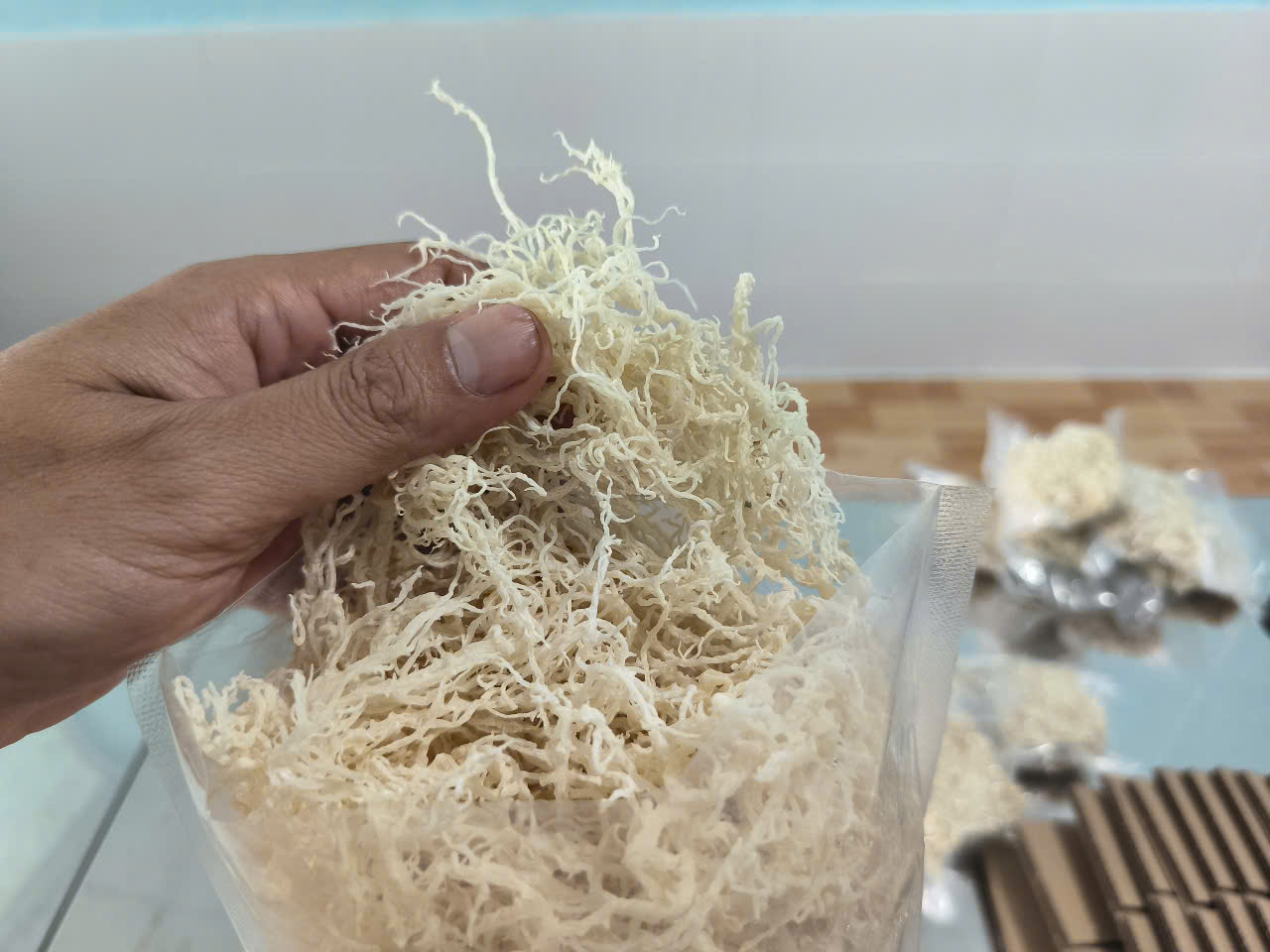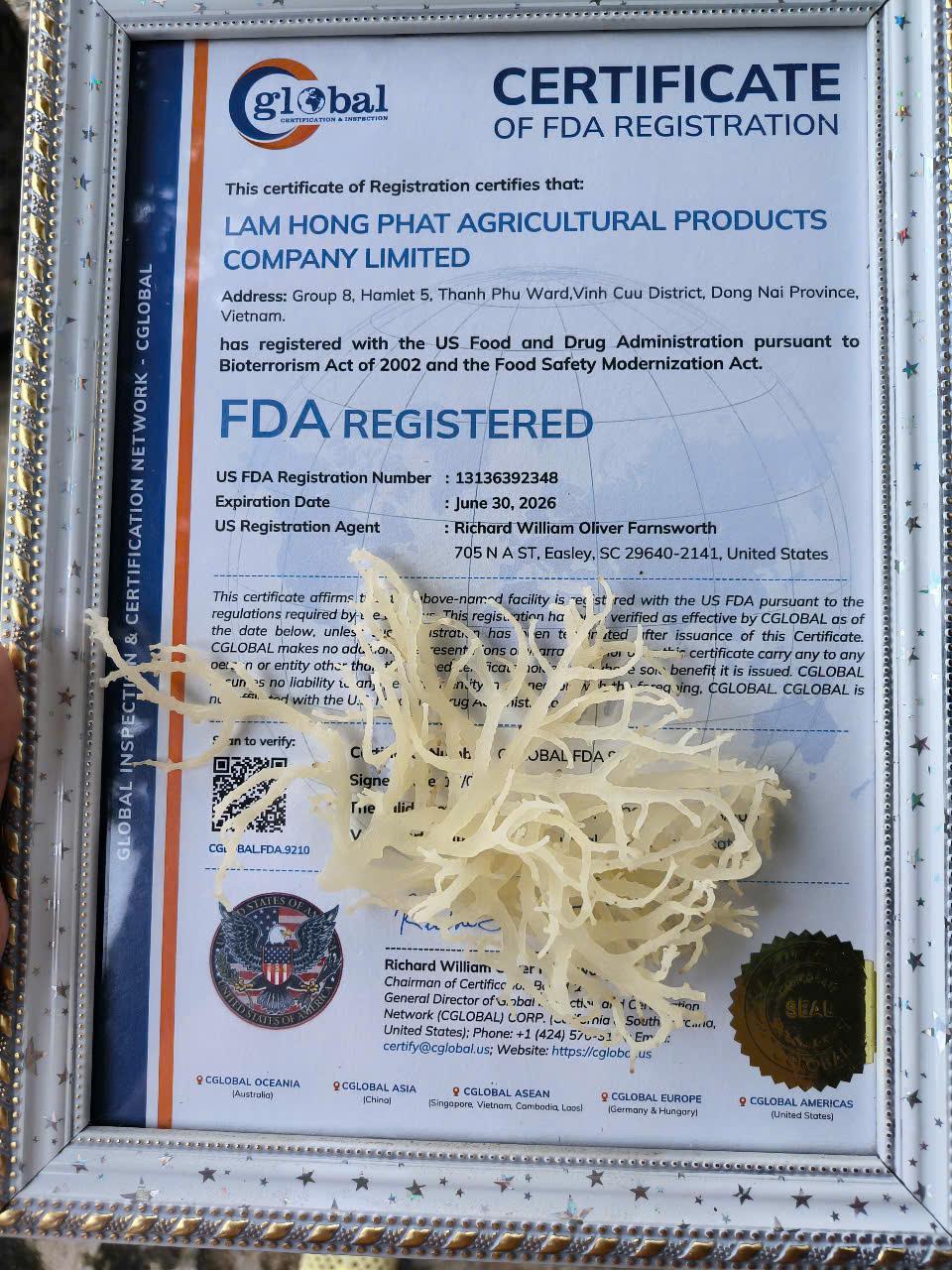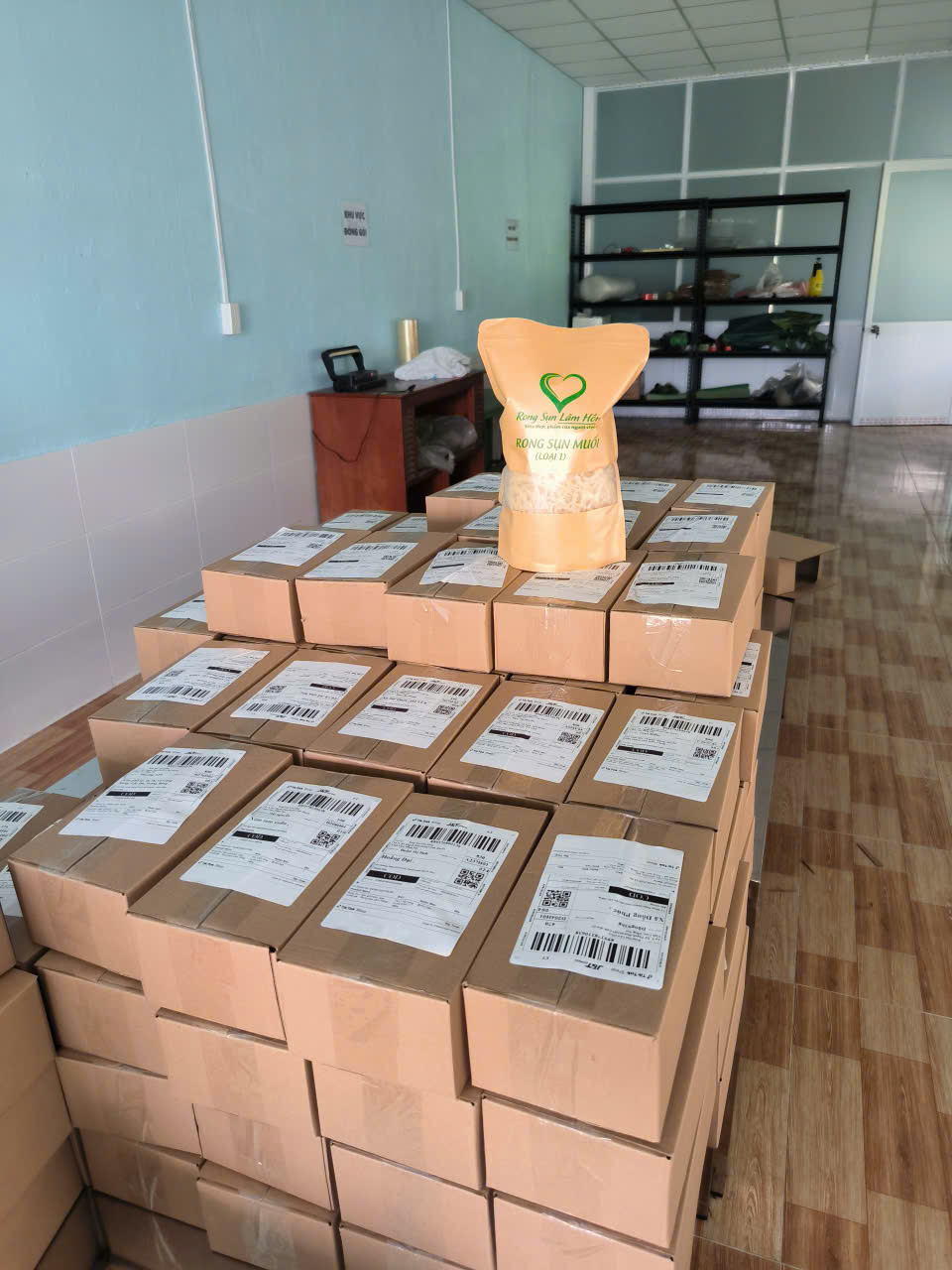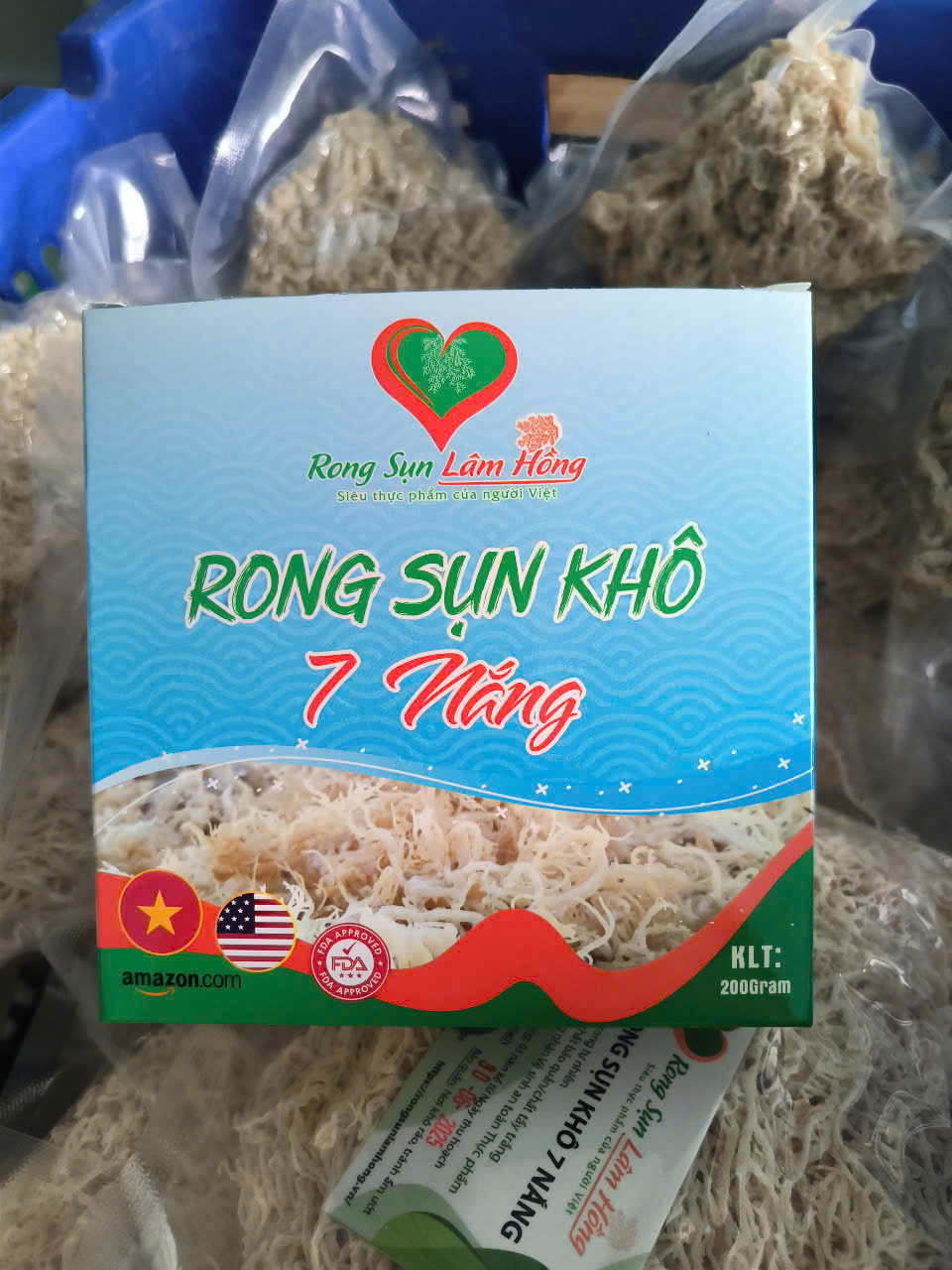As global interest in seaweed-based products continues to rise, selecting a reputable global sea moss supplier plays a pivotal role in building a sustainable and high-quality supply chain. The key lies in three factors:
- First, prioritize suppliers with transparent production processes – from certified cultivation areas to internationally accredited drying, packaging, and shipping procedures.
- Second, evaluate their capacity for stable, large-scale supply, a quality often found in well-established global sea moss producers.
- Lastly, cross-reference their background with reports on sea moss production in the world to understand the potential of the region where the supplier operates.
A trustworthy sea moss company not only provides high-quality products but also becomes a strategic partner in your long-term development goals.
1. Global trends in the sea moss market and production
In recent years, the global market for sea moss – particularly high-value varieties such as Eucheuma – has seen remarkable growth.
According to Grand View Research, the global sea moss market was valued at approximately USD 2.58 billion in 2023 and is projected to reach nearly USD 2.99 billion by 2030, with a compound annual growth rate (CAGR) of around 2.1%. Other estimates suggest an even faster expansion, with a CAGR of 5.9% between 2024 and 2025, reaching an expected USD 3.92 billion by 2029 .

Sea moss products under the Lam Hong brand
Timeline Overview
- 2018 - 2023: The market experienced a blend of steady growth and value breakthroughs, driven by increasing demand for nutrient-dense foods and natural ingredients.
- 2024 - 2030: Significant momentum, fueled by rising demand, particularly in the functional food, clean-label cosmetics, and supplement industries (Stratistics MRC).
Key markets
In Eucheuma production and seaweed cultivation in general, several regions stand out:
- Indonesia: Approximately 28.6% of global seaweed farming output.
- The Philippines: The world’s largest harvester of Eucheuma, contributing up to 92% of global production as of 2005.
- China and South Korea: Contribute 58.62% and 5.09%, respectively, of the world’s total seaweed output (including species beyond Eucheuma).
Market summary by year
|
Period |
Global market size |
Key trends |
|
2018–2023 |
Below USD 2.5 billion |
Health-conscious consumer awareness |
|
2024–2025 |
USD 2.96 → 3.13 billion |
Breakthrough CAGR of 5.9% (EIN Presswire) |
|
2029–2030 |
Up to USD 3.92 billion |
Stable CAGR around 5% |
This growth presents a valuable opportunity for global sea moss suppliers to develop export–import projects focused on Eucheuma and unlock growth potential for both suppliers and their partners.

Export-standard certifications for Lam Hong sea moss
2. How can businesses develop a sea moss import project with a global sea moss supplier?
As the global functional food, cosmetics, and pharmaceutical industries increasingly shift toward sustainable and green raw materials, sea moss (Eucheuma) is gaining recognition for its high nutritional value and versatile applications across sectors. Developing an import project with a global sea moss supplier is not only a rising trend but also a strategic move to enhance long-term competitiveness.
2.1. Define objectives and specific usage requirements
Before launching the project, businesses must clearly identify their intended use of sea moss within their production value chain:
-
Will it be used as a raw material for functional foods?
-
As a gel base in the organic cosmetics industry?
-
Or for carrageenan extraction in pharmaceuticals?
This classification helps the business select the right type of sea moss from a reputable sea moss company, while also ensuring proper input standards for the final product.

Sea moss storage warehouse at Lam Hong sea moss
2.2. Research and evaluate global sea moss suppliers
Not all international suppliers can meet strict requirements regarding quality control, organic certification, or traceability. Therefore, businesses should:
-
Conduct global market research to identify leading global sea moss producers.
-
Review the supplier's capabilities and the scale of their sea moss production in the world.
-
Prioritize partners with internationally recognized certifications such as USDA Organic, GMP, ISO, Halal, and Kosher.
Some of the most notable sea moss producing regions today include Southeast Asia (Vietnam, Indonesia, the Philippines), Africa (Tanzania), and the Caribbean (St. Lucia).
2.3. Develop an import and logistics plan
A sea moss import project requires careful planning in several areas:
-
Choose the optimal form for transportation (dried, frozen, or fresh sea moss).
-
Establishing long-term contracts with a reliable sea moss company to ensure supply chain stability.
-
Budget for tariffs, inspection fees, warehousing, and preservation costs.
2.4. Strategic partnership and building a sustainable value chain
Instead of pursuing one-time imports, businesses should consider forming long-term strategic partnerships with global sea moss suppliers to:
- Optimize pricing through bulk purchase agreements.
- Gain technical support and production transparency.
- Participate in the product development process from origin to end consumer.
This "win-win" collaboration model is increasingly adopted by many major global sea moss producers as a way to expand their export markets while ensuring long-term stability and sustainable growth for both parties.

Lam Hong sea moss in Vietnamese supermarkets
Developing a sea moss import project with a global sea moss supplier is a strategic move for businesses aiming to expand market share, elevate brand value through green sourcing, and internationalize their products. However, success depends on serious investment in market research, supplier evaluation, and end-to-end supply chain development.
Start by finding a reputable sea moss company, understanding global production trends, and taking the first step toward sustainable growth through international collaboration.
If you are seeking a global sea moss supplier in the Vietnam market, don’t forget to contact Lam Hong sea moss, your trusted partner in building a successful and sustainable supply chain for your business development goals.
We may not be the biggest global sea moss supplier, but we are confident that the quality of our products will fully meet your expectations, at a reasonable cost. Get in touch with Lam Hong sea moss today to start a conversation and form your own assessment.






